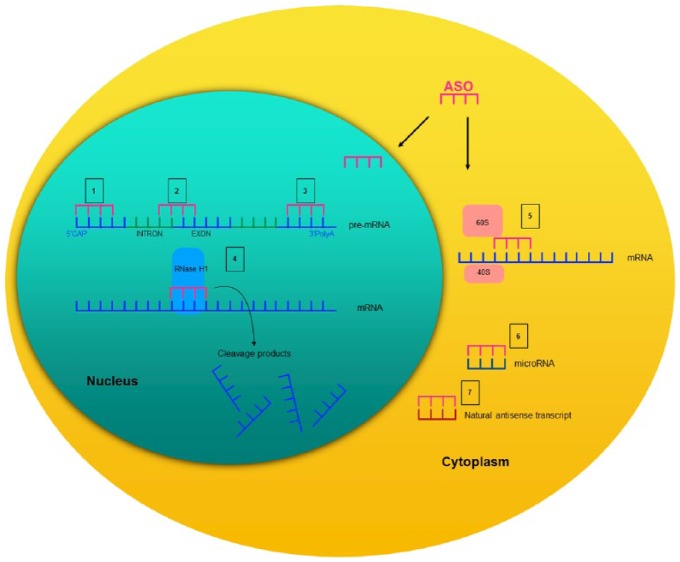Figure 1.
Schematic description of several mechanisms of action of synthetic antisense oligonucleotides.
Adapted from DeVos and Miller.19
Given their chemical design and target, ASOs can exhibit their effects by several different mechanisms of action. ASOs can be designed to prevent the 5’-mRNA cap formation (1) to bind on pre-mRNA intron/exon junctions and modulate splicing processes or (2) modify the polyadenylation site (3) to prevent mRNA translation. Given their chemical design, ASOs can be designed to activate RNase H1 and induces the cleavage of the mRNA (4). The direct skipping of the ASO to the mRNA inhibits the physical assembly of the 40S and 60S ribosomal subunits onto the mRNA sequence (5). By binding directly on microRNA sequences (6), the ASO prevents the binding of the target mRNA. Binding of the ASO to natural antisense transcripts (7) prevents the inhibiting effect on their mRNA and increases the corresponding protein levels. Notably, microRNA (6) and natural antisense transcript (7) inhibition may also occur in the nucleus.
ASO, antisense oligonucleotide; mRNA, messenger ribonucleic acid; 5’Cap, 5’-mRNA cap formation; 3’PolyA, 3’ polyadenylation.

